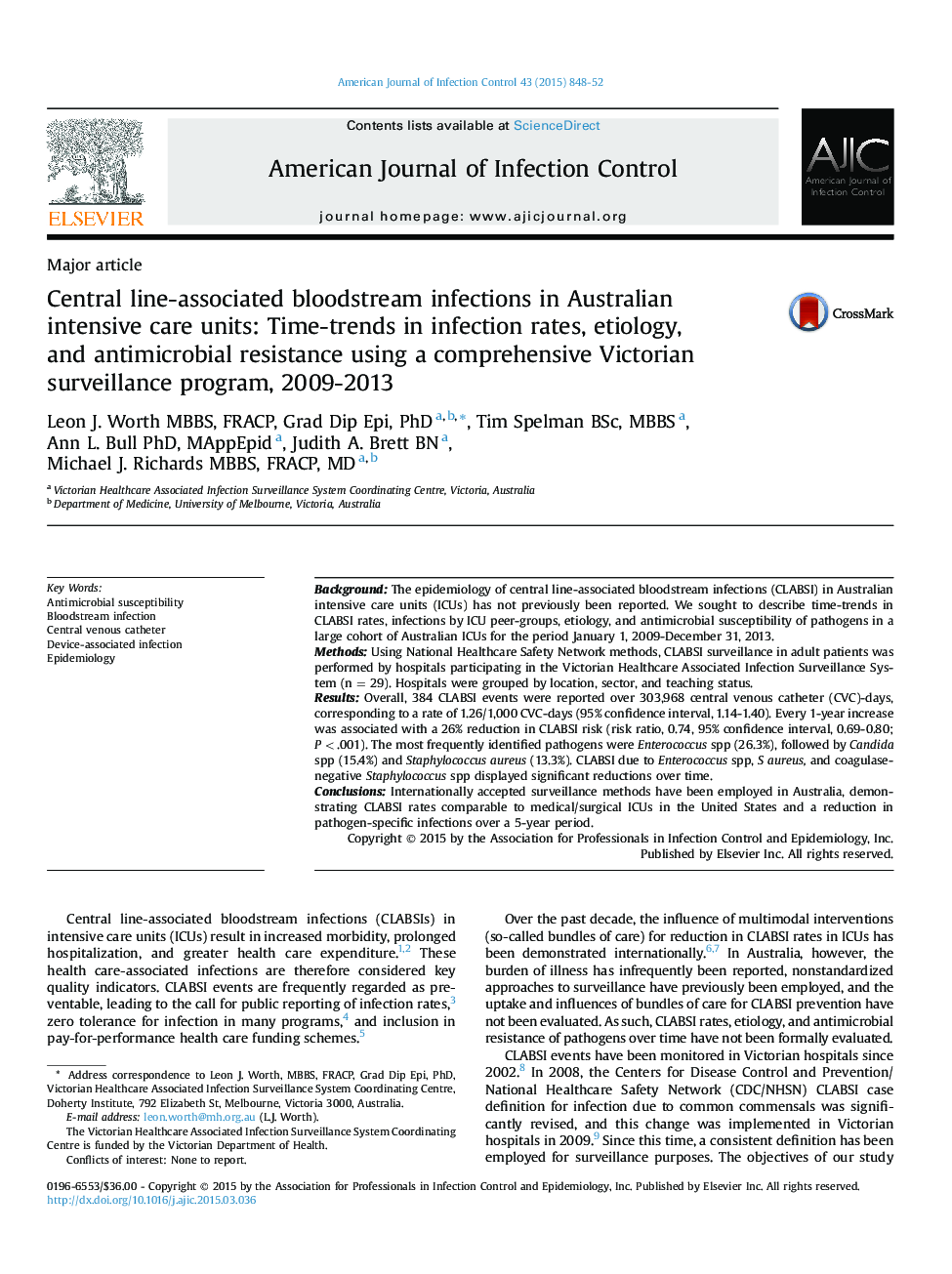| Article ID | Journal | Published Year | Pages | File Type |
|---|---|---|---|---|
| 5866618 | American Journal of Infection Control | 2015 | 5 Pages |
BackgroundThe epidemiology of central line-associated bloodstream infections (CLABSI) in Australian intensive care units (ICUs) has not previously been reported. We sought to describe time-trends in CLABSI rates, infections by ICU peer-groups, etiology, and antimicrobial susceptibility of pathogens in a large cohort of Australian ICUs for the period January 1, 2009-December 31, 2013.MethodsUsing National Healthcare Safety Network methods, CLABSI surveillance in adult patients was performed by hospitals participating in the Victorian Healthcare Associated Infection Surveillance System (n = 29). Hospitals were grouped by location, sector, and teaching status.ResultsOverall, 384 CLABSI events were reported over 303,968 central venous catheter (CVC)-days, corresponding to a rate of 1.26/1,000 CVC-days (95% confidence interval, 1.14-1.40). Every 1-year increase was associated with a 26% reduction in CLABSI risk (risk ratio, 0.74, 95% confidence interval, 0.69-0.80; P < .001). The most frequently identified pathogens were Enterococcus spp (26.3%), followed by Candida spp (15.4%) and Staphylococcus aureus (13.3%). CLABSI due to Enterococcus spp, S aureus, and coagulase-negative Staphylococcus spp displayed significant reductions over time.ConclusionsInternationally accepted surveillance methods have been employed in Australia, demonstrating CLABSI rates comparable to medical/surgical ICUs in the United States and a reduction in pathogen-specific infections over a 5-year period.
